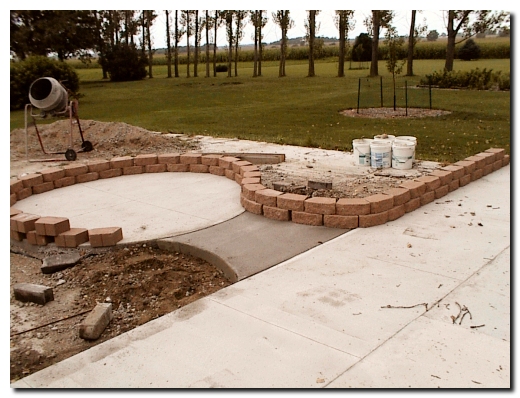

This current project, the final work on the shop patio and flower garden area, will be interrupted for a bit by a bit of concrete and landscaping near Sandy’s Shed. We need to use up the rOck/sand mix that remained on the old machine shed floor before we could start filling in with the black topsoil.
To speed viewing of these pages we decided to break it up into smaller pages. Please follow the links below to see our Barn Top Project:
During the summers of 2005 and 2006 we spent considerable time working on the concrete patio area near the new shop. We documented this work on the New Shop Project pages but decided that we’d separate this project from the shop since it really is more about landscaping than the shop. This area was previously the floor for the machine shed that we tore down to make room for the shop. We decided to pour a patio over the remaining floor and then finish up the south end by covering it with over a foot of black dirt for more flower garden areas. This project is to finish the concrete and retaining wall that will add a decorative touch to the patio.
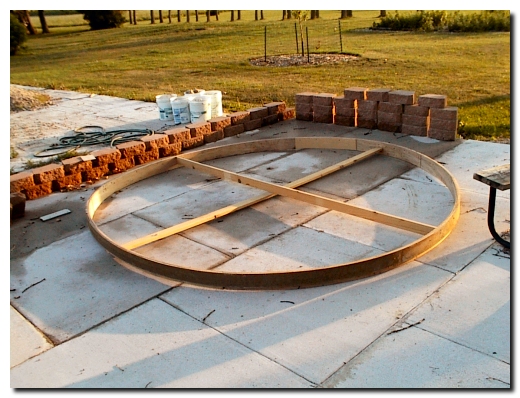
I began this project by constructing a 9-foot diameter concrete form using quarter inch plywood. I used 4-inch strips of plywood and screwed the overlapping ends together, pulling the ends together to form a complete circle. Then I added two more layers inside, offsetting the joints to increase the strength. After each layer I had to remove the screws where the circle was joined to make sure each layer ended properly. I completed the form with three layers of plywood and then an outer layer of ˝ masonite siding that was left over from generator foundation project. I constructed this on the new patio to make sure that the form did not have any built in up and down curves. The final step was to install two cross braces so I could move the form onto the old machine shed floor.
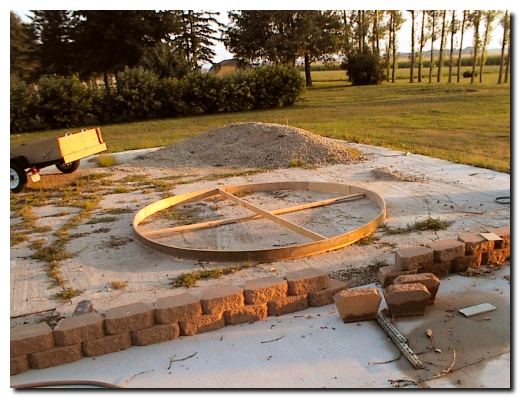
With the form in place I slid a piece of black plastic under the form to prevent the new concrete from sticking to the old cracked floor. I did not want to line the bottom with sand as I have done on other pours because this circular slab might shift if there was sand under it. I positioned the re-rod in a two foot square pattern.
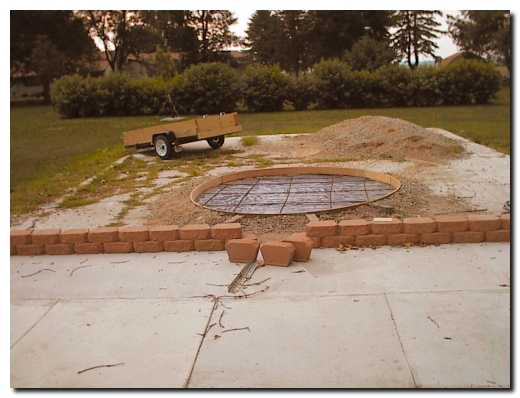
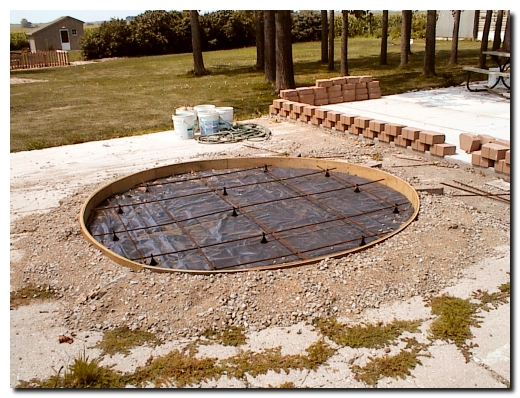
I leveled the form north to south and then added three quarter inch blocks to provide fall to the north. This slab will be surrounded with retaining wall blocks so I wanted enough fall to get the water to flow onto the main patio. The re-rod is supported with plastic re-rod seats. In the past I have used concrete chunks and/or brick pieces. I found this at the DIY center and there were so inexpensive that I decided to give them a try. The concrete pour was difficult and it took over 3 hours to mix and pour the slab. I dumped the concrete on opposites to keep the form from bulging from the weight of the wet concrete.
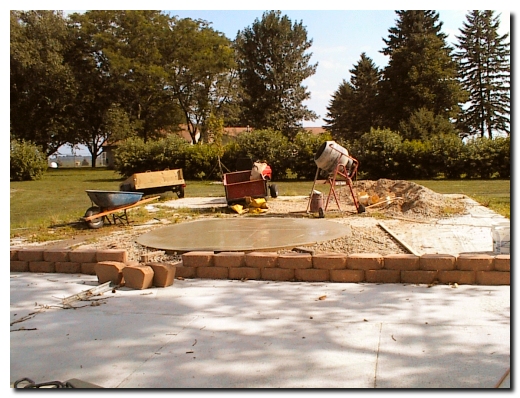
Finishing the concrete took a couple hours as it did not set as quickly as I had thought it would. It was about 85 degrees with a south wind, but it did not seem to help speed the process.
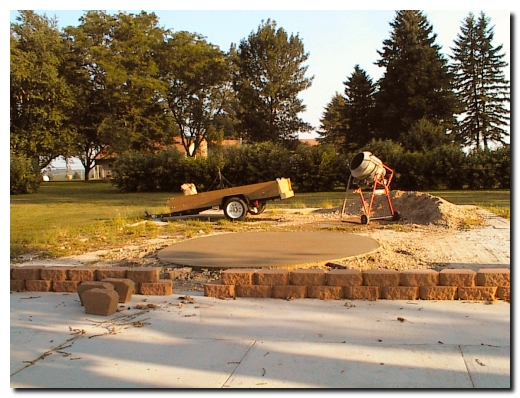
When the concrete was set I removed the circular form and used a portion of it to form a connecting walk to the main patio. The plywood form had set in the radius of the larger cement and provided a nice transition from the rectangular to the round. I didn't bother to cut the form to fit the fall of the conrete as this was such a small pour I could screed between the two concrete areas and use the form to control the curve only.
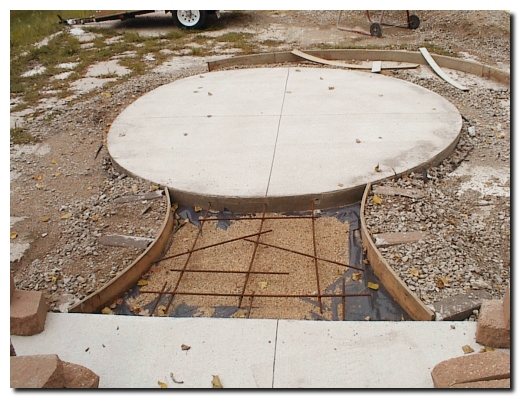
This pour was much easier than the last and took two wheel barrows full of concrete to complete the concrete on the shop patio.
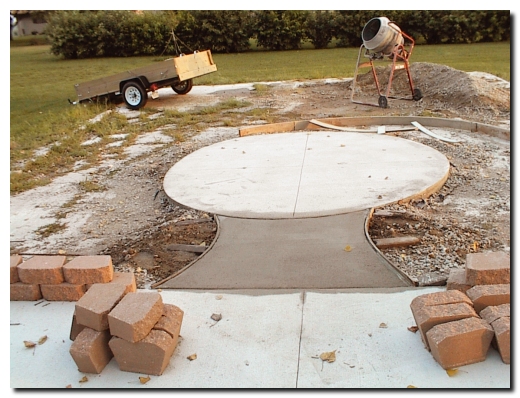
The extreme humidty kept the latest concrete from turing gray in the full day since it was poured. But it was set so it was time to begin setting the landscape blocks into place. With the two rows on top of the concrete we will be able to get about 14" of dirt over the top of the old concrete machine shed floor.
